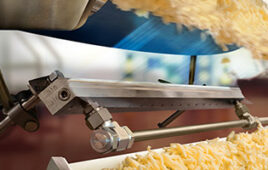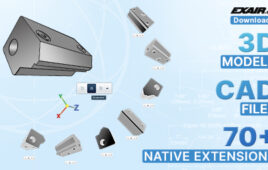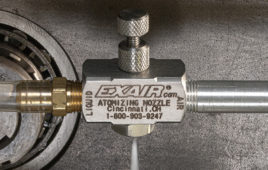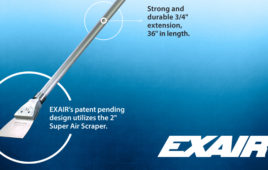
The DCF mechanically cleaned filters operate at a consistently low differential pressure and deliver simple, reliable operation in which a low initial investment is a key driving factor.
One of the largest packaging companies of consumer products in North America produces customized packaging for many popular national brands of household and personal care products in plants located across the U.S. and Canada. Environmental regulations at their plant require process water to be free of certain specified contaminants before being discharged into the public sewer system.
The company was using a large, 24 x 24-in. filter press equipped with a dozen 40-micron filter pads to remove flocculated contaminants from the wastewater before processing it through an ultrafiltration system before discharge. The pads had to be changed twice per day in a messy, labor-intense process that resulted in an average of three hours of downtime daily.
The contaminants collected by the filter pads include oils, zinc oxide particles, and silicates that were uncontained once the press was opened, exposing workers to potential irritants and allergens.
“Twenty-one hours of downtime per week in a plant operating 24/7 had become increasingly unacceptable to the customer,” said Anita Gupta, product manager of the Eaton distributor, John Brooks Company of Toronto, Ontario, “so they started looking at alternatives like bag filters and manually cleaned cartridge-type filters. They had not considered a self-cleaning automatic filter until we showed them the DCF-800.”
The plant processes an average of 400,000 gallons of water per week (approx. 1.5 million liters) through the system. Twelve 40-micron filter pads with a total surface area of 48-ft² (4.46 m²) removed about 10 pounds (4.5 kg) of contaminants from the wastewater stream. Two sets were used per day to remove 20 pounds (9 kg) of contaminants.
Given those figures, the company’s engineers were understandably skeptical that the physically small DCF-800 could successfully replace the large filter press. Gupta’s team overcame this by introducing them to another customer using a DCF filter in a similar application who was able to answer their questions and demonstrate the success of the unit in operation.
Gupta’s team replaced the filter press with a DCF-800 filter with a 38-micron screen. The result was improved protection for the downstream ultrafilter over the old filter press with no adverse impact on flow rates.
Operating at consistently low differential pressures, DCF series filters deliver simple, reliable operation with a low initial investment. They are particularly efficient for filtering viscous, abrasive, or sticky fluids, making them a suitable choice for this application.
The DCF filter consists of a cylindrical stainless-steel housing that holds filter media. Fluid enters the element and flows through to the outlet, depositing any contaminants on the inside wall of the element.
A spring-loaded cleaning disc moves up and down, wiping the filter element clean and depositing the contaminants at the bottom of the housing out of the flow path. Cleaning frequency can be based on time, differential pressure, manual selection, or any other application-specific criteria. Because the filter remains in service while being cleaned, DCF filters support high process efficiency.
The company has eliminated an average of three hours per day of downtime and the associated labor cost of maintaining the filter press plus the cost of new filter pads and the disposal of used ones.
Eaton’s unique circular cleaning disc design ensures intimate contact with the screen to thoroughly and uniformly clean the media.
 “The ability to reduce significant downtime and create a safer environment is what makes the DCF technology so unique in this application,” said Eaton regional sales manager, Aldo Guarneri. “A low differential pressure and lower cost of production was the ultimate goal. The DCF-800 achieved both and surpassed all expectations.”
“The ability to reduce significant downtime and create a safer environment is what makes the DCF technology so unique in this application,” said Eaton regional sales manager, Aldo Guarneri. “A low differential pressure and lower cost of production was the ultimate goal. The DCF-800 achieved both and surpassed all expectations.”
Building on this successful application, the customer has installed an Eaton filter on another process line to remove any residual contaminants from another product immediately before bottling.
Reducing waste disposal costs in Canada, where environmentally friendly business practices are strongly encouraged, provides not only financial savings, but also helps the company employ sustainable business practices.
Eaton
eaton.com
Filed Under: Filters (mechanical) for air + fans




